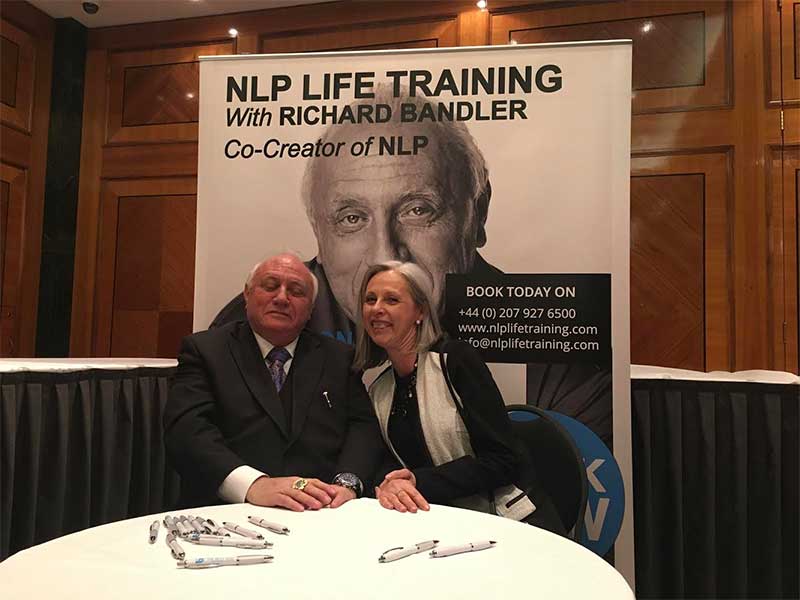I wonder if you’ve ever wanted to go somewhere but didn’t make it out of the house because of how you were feeling inside?
Maybe, you’ve even missed out on an amazing opportunity because it was just too much?
Wouldn’t it be wonderful to take control of your thinking, so that you make the most of everysocial opportunity on offer? And, be in the best emotional state to go where you want to go.
It’s estimated that approximately 5% of the population suffers from Social Anxiety. Also known as Social Phobia, Social Anxiety is a long-lasting fear of social situations unless you know how to control, reduce and eliminate it. 5% means that within every class, in every school, there will be at least one student who is at risk of non-attendance. One day rolls into another and before they know it multiple days of learning are missed. Needless to say, this can have a detrimental impact for the rest of their lives.
In 2017, 90% of Mums surveyed by the ChannelMum.com parenting site in the United Kingdom admitted that they felt isolated since having children. 80% admitted that they wanted more friends, and 30% revealed that they had never started a conversation with another Mum that had led to a friendship. 55% stated that isolation had led to anxiety and 29% stated that there were times when they feared leaving the house.
As primary carers, Mums are their child’s first and possibly most influential role model. Learning social behaviours from the onset is crucial for our children if they are to socialise and thrive in school, the workplace and beyond.
This Blog was inspired by a request from Kayleigh Ashton for me to speak at her Fierce Mums Group where their core purpose is to support Mums with Social Anxiety to feel increasingly more confident in their local community. It was a privilege to spend quality time with the group and to meet their gorgeous children who toddled off to join Sarah in pursuit of the park, whilst I shared key learning and techniques to support these beautiful Mum’s to take back control of their thoughts and begin to get out there more and more.
Defining Anxiety
Whilst it’s normal for all of us to feel nervous from time to time, Social Anxiety becomes an issue when your fears stop you from participating in life beyond your home or safe place. One of the presuppositions of Neuro-Linguistic Programming [NLP] is that “…there is a positive intention behind every behaviour.” This includes conscious and unconscious behaviours, whether you know the intention or not. As a Clinical Hypnotherapist, I sometimes work with my clients to find the route cause of their behaviour; finding that oftentimes the presenting symptoms [e.g. fear, blushing, sweating, heart racing, panic attacks, dissociation, or similar] are the result of an unpleasant experience in the past. Some clients can name their fears, whilst others tell me that they’re no longer sure of the trigger and that the symptoms come on all of a sudden. That is to say, that peoples’ experience of Social Anxiety can vary considerably and so can finding the solution. However, with some key knowledge and a few easy to learn techniques, you can begin to take back control of your emotions today.
Read on to find out the positive intention behind most people’s anxiety and to learn what you can do to bring unconscious behaviours into conscious awareness so that you can take back control and accelerate progress towards your social goals.
Managing Anxiety
As humans, we’re hardwired to be anxious. If I reframe that and state it in the positive, you’re hard wired to keep yourself safe.
Autonomic Nervous System [ANS]
The ANS has two parts:
- Sympathetic Nervous System [SNS]
- Parasympathetic Nervous System
The role of the SNS is to prepare the body to defend itself by activating glands and organs. This is called the Fight or Flight response. Blood flow to the brain and muscles is increased, whilst blood flow to non-essential muscles/organs such as the digestive system is decreased. The adrenal glands are activated to provide us with the energy to run or fight.
This is crucial for survival when there is a genuine risk. This is how Neolithic man could escape from a bear!
The PNS is concerned with healing, nourishing and regeneration of the body. It stimulates the immune system, digestion and organs that promote wellbeing. The parasympathetic nervous system can be activated by relaxation, rest and positive thoughts.
Fact or Fiction?
The issue with any form of anxiety is that it activates the Sympathetic Nervous System even when the fear isn’t really there. Our body copes with this in small doses, for example, when we watch a scary film but if the PNS is constantly preparing us to fight or run we start to feel
tired and run down.
The Key to Managing Anxiety
If you can activate the parasympathetic state, you can pre-empt or reverse the symptoms of anxiety. The two systems can’t work at the same time, and you can use a good feeling to outweigh anything else. Richard Bandler, Co-Creator of NLP, explains to his clients and students that we think in words and pictures. Words and pictures are powerful because they trigger good feelings or bad feelings; thus, activation the Autonomic Nervous System. In a nutshell, if someone is scared of a picture in their head [e.g. a spider or the thought of walking into a bar] they activate the ANS because they’re scared of the thought. Basically, it’s the worrying that becomes the issue.
This means that if you can learn to change the pictures and sounds that you make in your head, you can learn to change your response.
If you’re reading this because you want to take control of your social anxiety, I wonder where you’d go and what you’d achieve if you knew you couldn’t fail? The following techniques are for you to experiment with. Have a play and see what works for you. They are divided into
Behavioural and Physical Symptoms, although in reality the behaviour [thought] will trigger the rest.
Five Fierce Ways to address Social Anxiety & Achieve Fabulous Results
Symptom 1 [Behavioural]: Thinking – What if?
For example:
- What if I blush?
- What if I have a panic attack?
- What if someone judges me?
- What if I don’t fit in?
If you’re thinking along these lines, the chances are that you’ll have an image or picture in mind and an internal dialogue [inner voice] that’s coding your thoughts.
Solution: Change the Picture to Change the Feeling
Task 1: Turn up the colour to increase good feeling
- Think of a pleasant memory.
- Notice or get a sense of the picture in your head.
- Use your imaginary “remote control” to make the colours really bright.
- Notice how the intensity of the feeling increases and feel good all over again!
Task 2: Use Black & White to decrease the bad feeling
- Think of an unpleasant memory.
- Notice or get a sense of the picture in your head.
- Use your imaginary “remote control” to turn the colours to black and white.
- Notice how the intensity of the pictures decreases and you start to feel better.
- Bring back the picture in black and white.
- This time use your imaginary “remote control” or the power of your mind to blink the picture to black, then white.
- The brain likes to work really fast so now change it rapidly to BWBWBWBWBWBW…
- Now, notice what happens when you try to bring the picture back. Oftentimes, this becomes impossible.
- If you still get a sense of the picture, put a frame around it…blink it BWBWBW and then shrink it quickly down to the size of a penny.
- Notice how much better you feel.
Symptom 2 [Physical]: Butterflies, nausea or an upset tummy when you think about a social event
When you completed the task above, you may have notice that the corresponding feeling within was moving in a specific direction. You’re able to realise the direction of emotions [or e-motion, energy moving in your body] because of your vagus nerve. Also known as the vagabond nerve, the vagus nerve wanders throughout your body, keeps contact you’re your organs, controls the parasympathetic nervous system and sends your “gut instincts” to the brain. As an emotional being, your vagus nerve helps you to sense how energy is moving in your body. What’s more, you can control the direction to feel better. Here’s how:
Solution: Reverse the Spin to Dissolve Discomfort
- Notice the feeling inside your body. Where does it start? How does it move? Which direction does it spin? [Clockwise? Anti-clockwise? Forwards? Backwards?] To realise this easily, spin your hand in the four directions and sense which spin “fits” best with what you’re feeling inside.
- Slow the feeling down. Notice how you can make it STOP!
- Now, spin it the opposite way and notice that discomfort dissolve.
Top tip: If you can reverse a bad feeling, you can also increase a good feeling. You can do it now by remembering something that made you feel really good. Notice the feeling inside your body. Where does it start? How does it move? Which direction does it spin?
[Clockwise? Anti-clockwise? Forwards? Backwards?] To realise this easily, spin your hand in the four directions and sense which spin “fits” best with what you’re feeling inside. This time use the power of your mind to make the feeling spin faster…move it up to the top of
your head and right down through your body and enjoy feeling even better!
Symptom 3 [Physical]: Heart Racing and/or Trouble Catching your Breath
Solution: Keep Calm and Breathe with the 7/11 Breathing Technique
I was first taught this by Tina Taylor, NLP Master Trainer and Clinical Hypnotherapist, when I learnt her methodology for Painless Childbirth. In a nutshell, you can control a social anxiety or panic attack by deep breathing in order to override the sympathetic nervous system and slow down your heart rate, decrease blood pressure and muscle tension and increase focus.
During a Social Anxiety Attack: If you’re breathing becomes shallow, you can instantly take control by reverting to DEEP and INCREASINGLY SLOWER breathes. You can then aim for balanced breathing; breathing in for a count of 4 and out for a count of 4.
7/11 Breathing is a technique that you can use on a daily basis to support a sense of calm and well-being, as well as when you need it. The idea is that the exhalation is longer than the inhalation as this rapidly increases a sense of calm and can lead to deep relaxation. As a
hypnotherapist, I will sometimes use this to begin to induce trance.
Task: Keep Calm and Breathe with 7/11
- Breathe in for a count of 7…
- Breathe out for a count of 11… [and sigh]
- Repeat this pattern for a few minutes, noticing that increasing sense of CALM as you complete each round…
I recommend that my patients practise 7/11 breathing for 5-10 minutes on a daily basis, as this will enable you to achieve a calm default mode. It’s can be your gift to you. Make sure that your sitting comfortable; cross legged, if that works for you. You may want to add some
relaxation music to make it even more relaxing and nurturing.
Symptom 4: Worrying about what the other person is thinking when you’re talking
Solution: Wear your Princess Eyes and Dumbo Ears – Get out of your own head!
When we worry, our focus is internal and we’re apt to overthink what’s happening. When you’re socialising, you can maintain an external focus by looking at the person you’re talking to, noticing everything you can about them and listening so well that you “record” what they’re saying so well that you can play it back later.
Symptom 5: Low Power Body Posture
Solution: Power Posing for 10 minutes Per Day
Professor Amy Cuddy is an American Psychologist who wondered whether our physicality [Body Posture] affects or Psychology [Mood and Confidence]. So, she carried out extensive research to find out by having subjects pose in low body poses [Imagine Eeyore who is painfully shy] compared to Wonder Woman [Fierce and Fantastic]!
Professor Cuddy’s investigations proved that our physiology does affect our neurology for better or worse. So, use power poses of your choice on a daily basis to notice an increasing sense of confidence and well-being.
Tanya Bunting
Tanya is a Clinical Hypnotherapist, NLP Trainer and Student Liaison Lead for the International College of Clinical Hypnotherapy. She works flexibly as a therapist, coach, teacher/trainer with clients of all ages, in her hometown [Bournemouth] and wherever her skills and interests take her. With a background in school leadership and a passion for life- long learning, her USP is of course, Learning. Her training gives you the skills to independently use hypnosis [trance] and NLP independently to manage your social anxiety or other symptoms.
Medical Disclaimer
The content in this article is not is not intended to be a substitute for medical/obstetric advice, diagnosis or treatment. Always seek the advice of you GP or other qualified healthcare advisor with any questions you may have regarding a medical condition. Never disregard professional medical advice or delay in seeking it because of something you have seen on a website.














